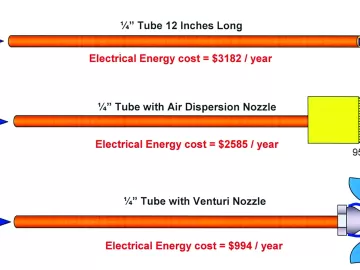Tier 1 Automotive Supplier Saves Energy Upgrading Centrifugal Air Compressor Controls
A Tier 1 automotive supplier was concerned its compressed air system was not operating as efficiently as it could be. The situation called for a site visit and metering and evaluation of the company’s air compressors to generate a representative data sample that accurately captured the compressed air needs during typical production and non-production periods.












